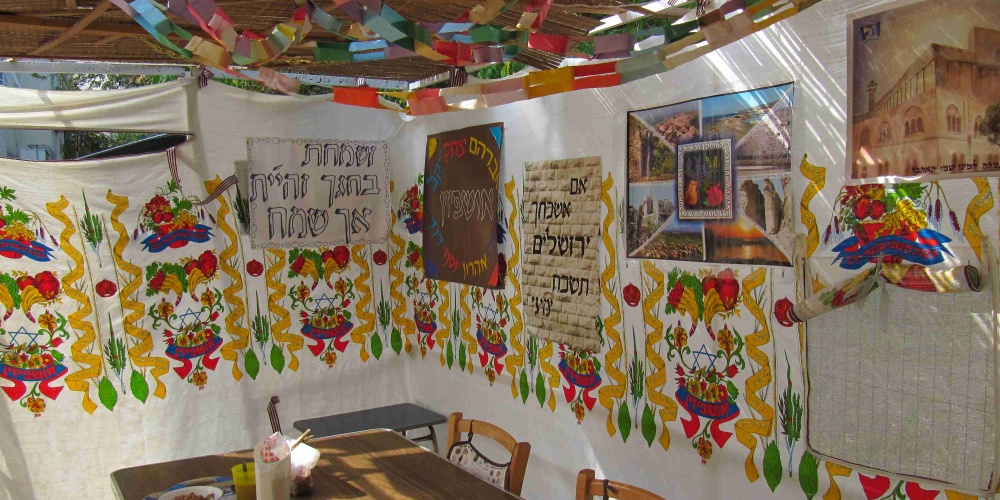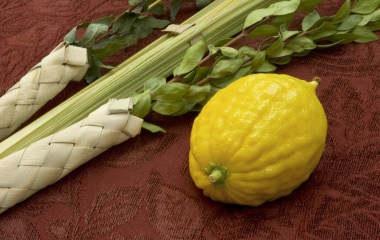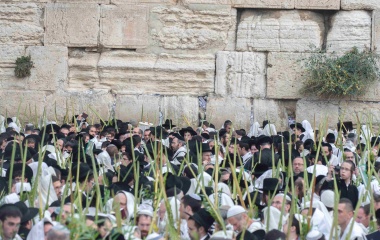
Those who have sat shiva know that the weeks after shiva can be much harder than the shiva itself. No longer are there people coming to visit, at times at a non-stop basis, helping to provide comfort. During shiva, one’s needs are generally taken care of and one exists in a time warp, hearing uplifting and often inspiring stories about the deceased. As shiva ends and the house gets quiet—often eerily quiet—the reality sets in and the tremendous psychological benefits of shiva are no longer. While time itself offers some form of healing, those first few weeks can be the hardest. It can be even more important to visit or call during the weeks after shiva than during the shiva itself.
What can make the healing process that much harder is when shiva is cancelled or postponed due to Yom Tov. In what is undoubtedly one of the most difficult of halachot, Jewish law demands that the mourner cease all forms of mourning with the advent of Yom Tov. A parent may have been buried mere hours earlier, but personal mourning must give way to the joyous celebratory time with the nation as a whole. And when a death occurs on the Yom Tov itself, shiva may only begin after Yom Tov, creating an emotional black hole where one is somehow meant to “celebrate” Yom Tov, holding off mourning for up to a week.
While one can go through the motions of Yom Tov and display no outwards signs of mourning, it is just about humanly impossible to feel the joy of Yom Tov in such circumstances and to avoid the natural feelings of sadness. It is, to borrow terminology from Rabbi Soloveitchik, possible to observe the ma’aseh hamitzvah, the technical aspect of the mitzvah, but still be unable to be mekayem the mitzvah, have the proper internal feelings for the proper fulfillment of the mitzvah.
The dichotomy between outward and inward mourning is well recognized by our Sages. When one is put to death by the court, the laws of mourning do not apply. While it is sad that there are those deserving of death, “when evil is destroyed, there is joy” (Mishlei 11:10) and hence, it would be ludicrous to mourn a murderer. Instead, “the relatives would come and inquire about the welfare of the judges and about the welfare of the witnesses, as if to say: We hold no grudges against you, as you judged a true judgment” (Mishna Sanhedrin 6:6).
Yet the Mishna acknowledges that the relatives will grieve their loss, “as grieving is only in the heart”. This is both permission to grieve and an expression of the reality. One can ban outward expression of mourning, but one cannot and should not attempt to ban feelings. The family should understand the necessity for the execution, but that does not mean they are not terribly saddened.
With the pain of mourning and the joy of Yom Tov unable to co-exist—oxymorons, if you wish—the following Gemara is rather striking. "Tania, it was taught: Rabbi Elazar bar Tzadok said: This was the custom of the people of Jerusalem. A person leaves his house, and his lulav is in his hand; he goes to the synagogue, and his lulav is in his hand; he recites shema and prays, and his lulav is in his hand; he reads the Torah and lifts his hands [to recite the priestly benediction], he places it on the ground” (Sukkah 41b).
While the technical mitzvah of lulav is fulfilled once one picks it up, the mitzvah is operative all day. Sukkot is lulav time, and while not technically a mitzvah, carrying it with you wherever you may go is a hiddur mitzvah, a way to beautify the mitzvah; or to use the language of the Gemara, “it teaches how zariz, diligent, they were in performing mitzvot”. What a beautiful custom the people of Jerusalem had!
But how can we explain the continuation of the Gemara? “He goes to visit the ill or to console mourners, his lulav is in his hand; he enters the study hall, he sends his lulav in the hands of his son, in the hands of his slave, or in the hands of his agent.” With no mourning allowed on Yom Tov, it is hard to understand how a situation could arise that one could bring a lulav to a house of mourning.
Since taking a lulav when it is not Sukkot is devoid of religious significance—it would be like eating matzah on Shavuot—it must be that the people of Jerusalem would comfort mourners on Sukkot. But how could they?
While there was is no official mourning on Yom Tov, it is a time—the best time—for people to come together. It is the time the nation gathers in Jerusalem to celebrate the great founding moments of our history. As our Sages note, we are to all join together in one giant sukkah and hence there is no better time to visit people than on Sukkot[1]. And who better to visit than one who recently lost a family member? There might be no public mourning, but that does not mean one should not offer comfort. Visiting when there is no technical requirement of shiva visits, when few other are likely to be doing so, may offer even more comfort than a regular shiva visit.
When the people of Jerusalem came to console mourners, they came carrying their lulavim. Perhaps this, too, offered a measure of comfort. The arba minim grow from the ground, reflecting death, renewal, and growth. During the long winter, it appears as if there is no activity in the land; it is fallow and devoid of life. Yet beneath the surface, hidden from view, the seeds are getting ready for renewal and growth. Death is the long winter between this world and the World to Come, or to quote from the cover of Rabbi Maurice Lamm’s classic work, The Jewish Way in Death and Mourning, "Death is a night - that lies between two days". The lulav reminds us that even after death, there is life.
Rabbi Elazar bar Tzadok, in whose name this teaching is recorded, lived through the destruction of Jerusalem. His father, Rav Tzadok, fasted for forty years in a futile attempt to avert exile and destruction. Rabbi Elazar witnessed much mourning and would have been one of the “Avelei Tzion v’Yerushalayim”
Jerusalem was lost, our Sages teach, because we did not treat each other properly; we hated rather than loved (Yoma 9b). We refused to go beyond the letter of the law, always insisting on all that was due to us, a sure formula for unending conflict (Bava Metzia 30b).
Sukkot is the holiday of Jewish unity, the tikkun to Tisha B’Av. More than any other holiday, Sukkot is a Temple festival. According to Biblical law, the lulav is brought for seven days in the Temple only. Nisuch hamayim, the water libations unique to Sukkot, and the special mitzvah of arava were conducted in the Temple. More sacrifices were brought on Sukkot than any other holiday. Even the minimum height of the Sukkah is derived from the height of the aron kodesh,
After the destruction, no longer could the lulav be brought to the Temple. Such was replaced with many houses of mourning. The Avelei Tzion v’Yerushalayim brought their lulavim to “the stranger, the orphan, and the widow” to “rejoice with them” and offer comfort to the people and to G-d Himself.
When one leaves a house of mourning, one comforts the mourners by invoking the Avelei Tzion v’Yerushalayim. They took time from their holiday to offer comfort to those who were in mourning, even and especially when the mourners may not mourn. When we offer these words of comfort to mourners, we affirm that we will be there to help those who have suffered loss, including after the mourning period has ended. This is the message of Sukkot taught to us by the "people of Jerusalem".
[1] Visiting on Sukkot is also most practical. In an era when people worked hard six days a week and did not work on Chol Hamoed, one had much more time on one’s hands.



